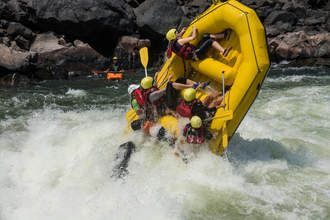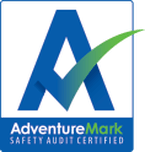Learning from Incidents in the Outdoors

“Good judgement comes from experience…and experience, well that comes from bad Judgement”
Learning to Fail Safely
I was recently camping in the bush with my 5-year-old son. We had a small camp fire and as I ran off to collect some more wood, my son put his finger into the edge of the fire and burned his finger. I had warned him several times on the dangers of the fire but the situation got me thinking.
What could I do better in the future and what have we both learned from this. There is no point dwelling on the past and getting angry about the situation. (At least that’s what I told my wife when home). It would be best to look to the future and look at what I could have done better.
What have we both learned
- I need to be a better dad and keep a closer eye on my very young and inexperienced son.
- My son definitely learned a painful lesson and it is likely he won’t put his finger in a fire again.
- I need to have burn cream in my first aid kit
In many ways, the second point has provided my son with a painful but useful lesson. Not ideal but probably more effective than his dad telling him over and over again about the dangers of fire. Ideally, we want outdoor instructors to gain hands on experience but perhaps failing in a safe way would be a better way of achieving this. They do need to be allowed to make mistakes to improve.
Traditionally having incidents has a stigma attached to it. People in the outdoor industry and many other industries analyse too quickly and make judgement too fast. If you are operating in dangerous activities it is very likely you will have incidents. It is how we react to them that is important. Safety should not be judged by the absence of incidents but by the absence of controls you have in place.
Working as a safety auditor in both the adventure industry and auditor and investigator in wider industries around the globe. I am often bombarded by people who see little value in safety. They see it as unnecessary red tape and systems that tend to slow down productivity. If implemented correctly it should do exactly the opposite.
Essentially good safety systems are based around constantly learning and constantly improving. Something that should be entrenched into outdoor instructor training on day one.
If you work in a shoe factory you are trained how to make shoes first and typically safety is a side-line to productivity. Outdoor Instructors learn about safety from day one. It is integral to running activities in dangerous environments.
What the outdoor industry are often not so good at is recording minor incidents, near misses and documenting the learnings from these incidents. We have lots of them. These are just free lessons.
Humans make mistakes. That is not only your clients but your instructors and the owner operators too. We can build systems around clients and instructors to allow them to fail safely. Car manufacturers realised this early on. We won’t stop humans from crashing cars but we can improve systems around them. Air bags, ABS, speed limits, seatbelts etc.
Formula 1 racing used to have a huge number of fatalities in Jackie Stewarts era. Today we can witness a formula 1 car crash at 200kms/hr and the driver walks away. This is due to the companies sharing data and learning from incidents. Something we need to get better at in the outdoor world.
Unfortunately there is a conflict between those that wish to learn from incidents and share data. Those that like to assign blame too quickly, and the commercial and legal pressures of keeping incidents confidential. The media play a big part in this too. This will hopefully improve over time as people start to realise incidents do happen when humans are involved. Its how we react and deal with incidents that is important.
If I take 3000 people to the cinema over a year I would expect to have some minor incidents or close calls… just like if I take 3000 people over a mountain pass. It is just probability. No matter how small an incident we can always learn and always improve and always share our findings.
What we want is people to fail safely. You cannot control whether your client or instructor has a random heart attack or is stung by a bee. You can have systems in place to deal with these situations effectively and efficiently. Clear emergency procedures, staff trained in first aid, charged and tested communication devices. You can essentially set up to fail safely.
Incidents don’t just have to be safety based. If your booking system fails or a client turns up with the wrong gear then that is an incident. If your weather forecasting was off the mark for the day and you had to turn a kayak trip back… that is an incident. An Incident in simple terms is:- “something you did not want to happen”
You can review the situation as a team and improve your operation. The same process for an incident on the river or mountain can be used for a bookings failure in your company.
So, next time you have an incident don’t look at it as a negative. Learn from it, make improvements, share the findings and move on. It will make you a better more experienced instructor and operator. Sharing the information with other operators and competitors is key. A major incident in the adventure industry impacts everyone.
If you genuinely believe that you are at the top of your game, won’t have incidents and can’t improve anymore... then you are probably in the wrong industry. It could be time to hang up your climbing boots, sell your kayak and move on.
“If you want 100% accuracy get a machine. It is not possible from Humans” –
Dr Todd Conklin
Jamie Simpson is General manager of AdventureMark™ . He also works for Kelvin TOP-SET around the globe investigating major disasters and teaching companies and individuals how to run effective simple incident investigations and learning teams.

